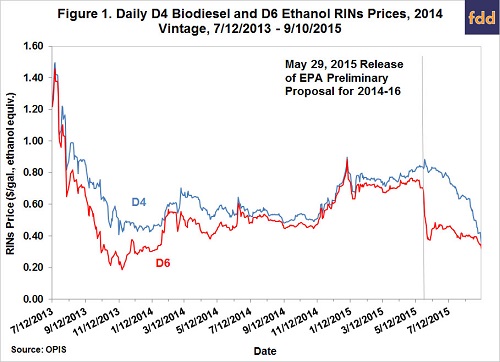The price for D4 biodiesel renewable identification numbers (RINs) has dropped by more than 50 cents since the middle of June, leaving many scratching their heads and asking, “Why?” Analysts from the University of Illinois have an explanation.

The first factor contributing to the decline in D4 biodiesel RINs prices is the price of soybean oil, which is the main feedstock used to make biodiesel in the U.S. The price of soybean oil has fallen about 7 cents per gallon since mid-June due to improving soybean production prospects in the U.S. and concerns about economic growth in China. With a binding volume mandate, soybean oil prices are the main determinate of biodiesel prices, so the decline in soybean oil prices has led to a decline of more than 60 cents in the price of biodiesel. In turn, the decline in biodiesel prices has been the main factor in narrowing the biodiesel blending margin by about 25 cents. Since the biodiesel blending margin, at least in theory, is equal to the RINs value (ignoring time value), we are left with the puzzling result that the decline in D4 RINs prices is slightly more than twice the size of the decline in biodiesel blending margins. The most likely explanation for this puzzling result is that traders have been revising upward their estimate of the chance that the biodiesel tax credit will be reinstated for 2015. Since a tax credit reduces the RINs price when there is a binding volume mandate, it is rational to reduce D4 prices sharply if traders perceive a high chance of the credit being reinstated. Recent activity in the U.S. Senate is consistent with such an expectation.
You can read the full explanation here.

